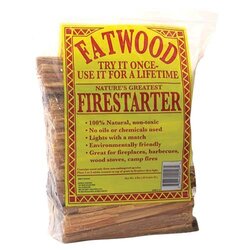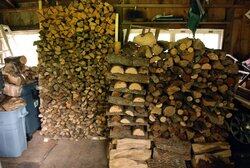This years burn season is rapidly approaching. In the past I used old pallets as kindling during the early season when 24/7 burn was not necessary. I used a worm drive circular saw to cut the pallets into manageable pieces and stored these pieces in large totes close to the stove.
During the last 2 years I have begun to use fire starters instead of kindling. There are many different types of fire starters available, but my favorite is Starterlogg. They light easily and ½ a log gets my well seasoned oak roaring hot in a short time. Using fire starters has saved me a lot of time and energy by not using kindling.
Starterlogg can be purchased for around $20 for a 16 pound box that contains 40 logs. That's 80 fires (as I only use ½ a log to start my fires) or $.25 a fire.
So what do you use to start your fires? Kindling or fire starters??

During the last 2 years I have begun to use fire starters instead of kindling. There are many different types of fire starters available, but my favorite is Starterlogg. They light easily and ½ a log gets my well seasoned oak roaring hot in a short time. Using fire starters has saved me a lot of time and energy by not using kindling.
Starterlogg can be purchased for around $20 for a 16 pound box that contains 40 logs. That's 80 fires (as I only use ½ a log to start my fires) or $.25 a fire.
So what do you use to start your fires? Kindling or fire starters??



